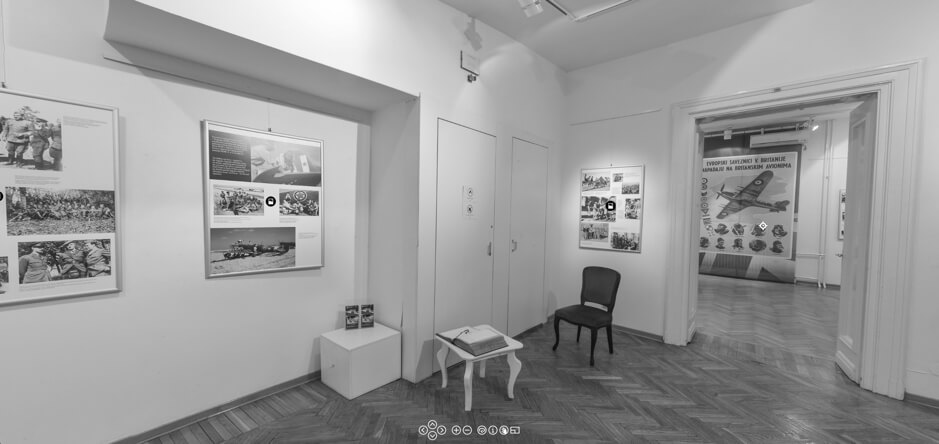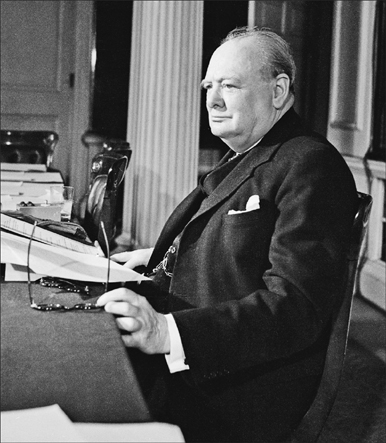
British Prime Minister: Winston Leonard Spencer Churchill. (IWM, London, photographic archive, H 41846)
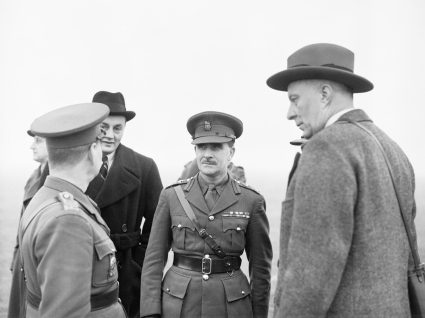
Hugh Dalton (right) Minister of Economic Warfare, and Colonel Colin Gubbins, Chief of the S.O.E. who directed operations across the world. (IWM, London, photographic archive, H 8185)6)
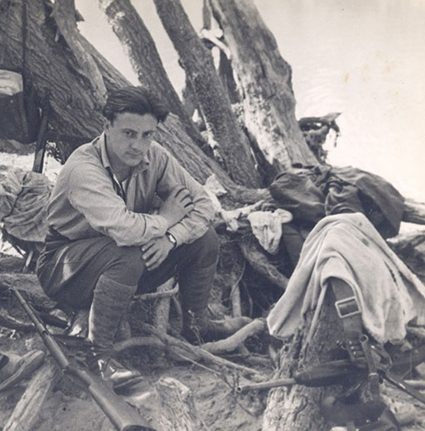
Julian Amerywho was part of Section D of the S.O.E. worked from the British Embassy in Belgrade in early 1941. (Churchill Archives Centre, The Papers of Julian Amery, AMEJ)
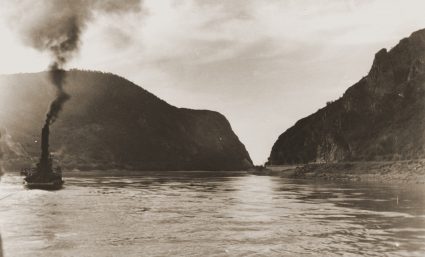
A river barge steaming up the Danube towards the Iron Gates. (National Archives, London, Document HS7-202)
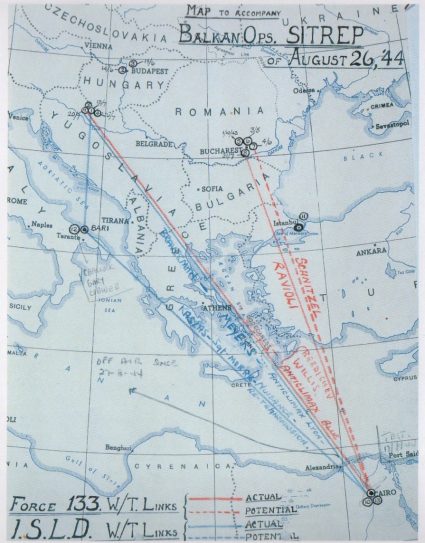
Secret Intelligence S er vice (SIS) radio links from Cairo into the Kingdom of Yugoslavia. (National Archives, London, Document HS7-202.
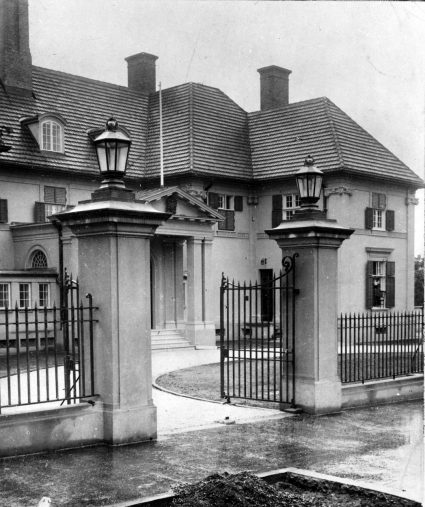
The British Embassy in Belgrade was used as a base for S.O.E. officers prior to the invasion of Yugoslavia. (IWM, London, photographic archive, NA23378)
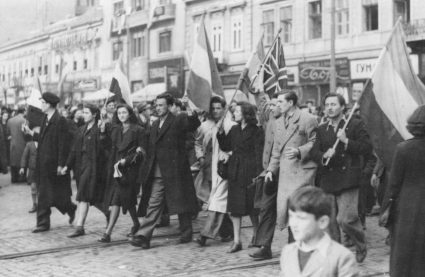
The Union Flag was very visible on the streets of Belgrade on 27th March 1941. (WW2 Stock Image)

Captain Eric Hargreaves immediately prior to being parachuted into Serbia. His equipment is all standard issue and totally impractical for use in the hills and mountains of Yugoslavia. (National Archives, London, Document HS9-663-6)
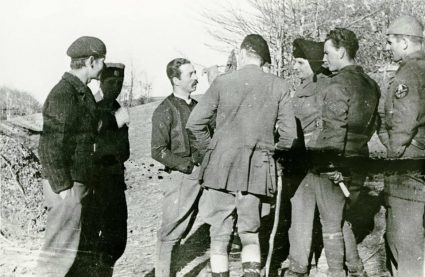
Major Japer Rootham wearing assorted British uniform items in discussions with JVuO officers shortly after his arrival in Serbia. (IWM, London, photographic collection, 8912-19)
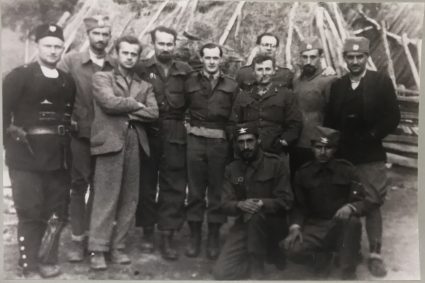
British officers all received a warm welcome on their arrival in Serbia. Here Captain Erik Greenwood poses alongside his welcoming committee. (IWM, London, photographic collection, 8912-19)
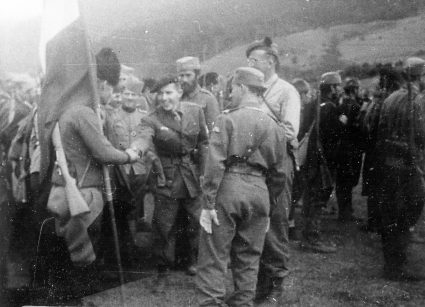
Maj Greenlees (S.O.E.) and Captain Mansfield (O.S.S.) visit a JVuO unit somewhere in Serbia (IWM, London, photographic collection, 8912-19)
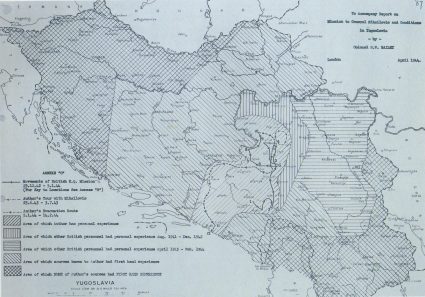
A map drawn by Colonel William Bailey illustrating the extent of the ground covered and known by S.O.E. officers operating from Serbia. (IWM, London, photographic archive, National Archives, London, Document HS7-202)
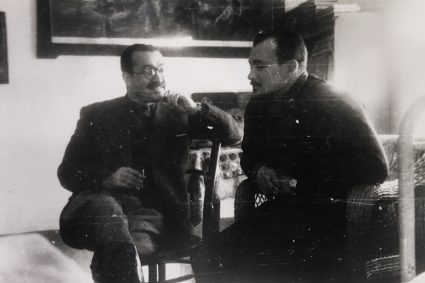
Colonel William Bailey and Major Bill Hudson in conversation shortly<br /> after the former's arrival in Serbia on 25th December 1942. (IWM, London, Documents archive, 12691)
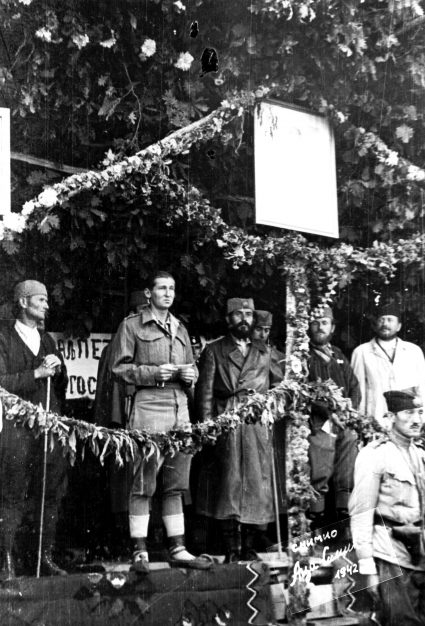
Captain Maynard delivers a speech to the 2nd Ravna Gora Corps on the King Peter II’s Birthday 1943. (National Archives, London, Document HS7-202)
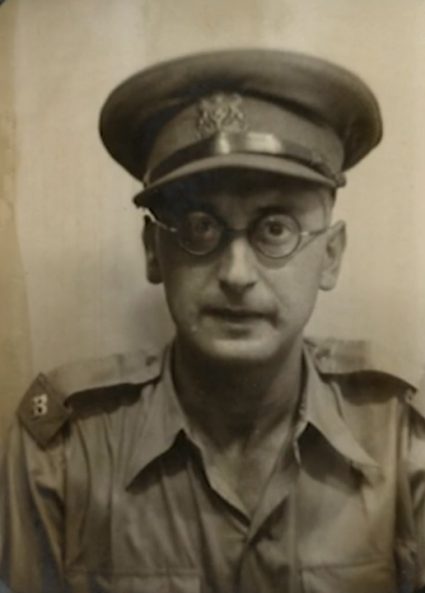
Major James Klugmann - the British Communist who was responsible for passing on intelligence reporting generated in Yugoslavia from Cairo to London. (National Archives, London, Document HS8-1009)
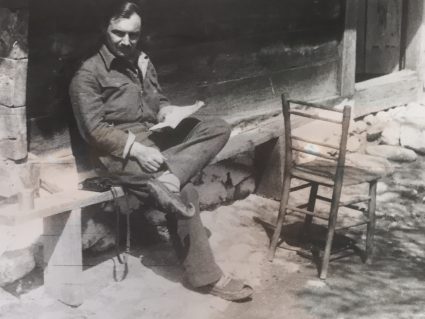
Major Archibald 'Archie' Jack wearing traditional Serbian peasant footwear. (IWM, London, photographic archive, HU 88447)
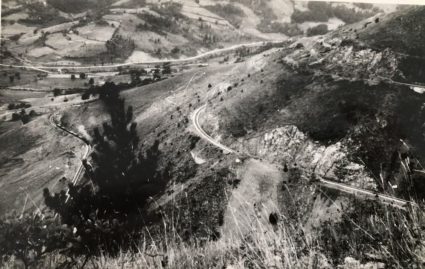
A picture taken by Major Archie Jack of a successful attack on the Mokra Gora railway line that stopped supplies reaching Sarajevo from Belgrade. (IWM, London, Documents archive 12697)
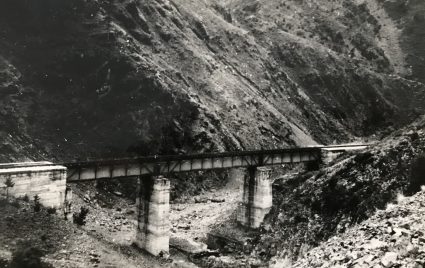
A picture taken by Major Archie Jack of a bridge near Mokra Gora before its destruction in October 1943. (IWM, London, Documents archive 12697)
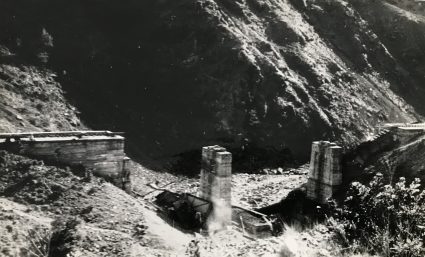
The bridge near Mokra Gora after it had been blown by Major Archie Jack and JVuO engineers. The BBC attributed the destruction of 5 bridges and tunnels in this area to the Partisans. (IWM, London, photographic archive, Documents archive 12697)
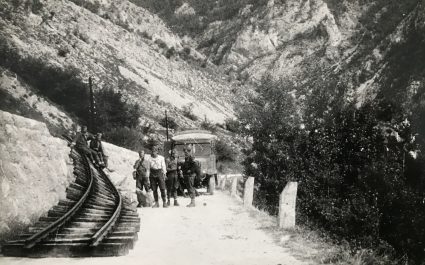
S.O.E. and JVuO next to a destroyed stretch of railway in Serbia. Significant numbers of attacks were successfully conducted in Serbia throughout 1942 and 1943 in order to prevent supplies to German forces in Greece and North Africa. (IWM, London, photographic archive, Documents archive 12697)
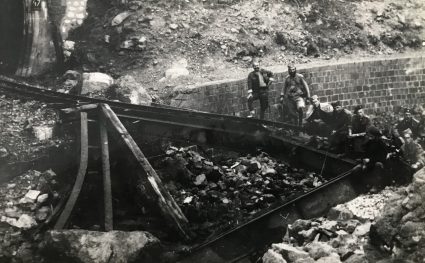
Major Archie Jack with JVuO after another successful railway line attack. It is estimated that one-third of all German railway engines and half of its rolling stock were put out of action by the JVuO in Serbia. (IWM, London, Documents archive 12697)
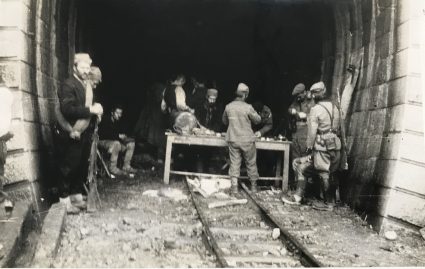
Major Archie Jack and JVuO engineers take shelter in a tunnel leading to the Lim railway bridge near Visegrad, in order to prepare charges for its destruction. (IWM, London, Documents archive 12697)
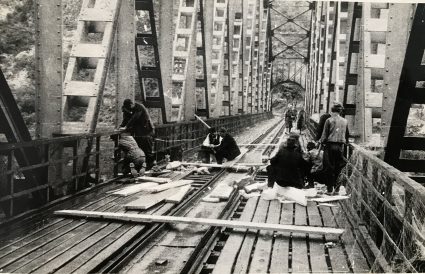
Major Archie Jack and JVuO engineers laying their charges on Lim railway bridge. (IWM, London, Documents archive 12697.
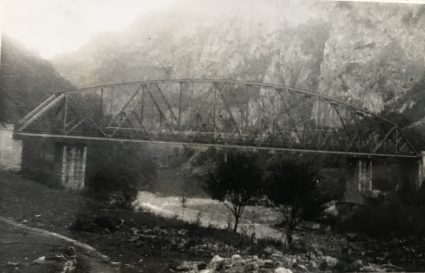
The Lim railway bridge prior to its destruction. (IWM, London, Documents archive 12697)
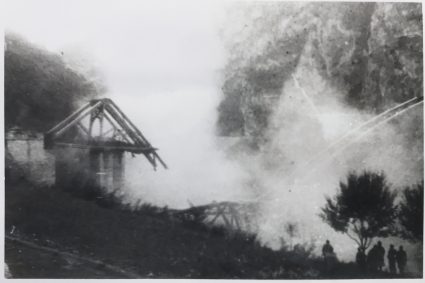
The Lim railway bridge as the charges are blown. (IWM, London, Documents archive 12697)
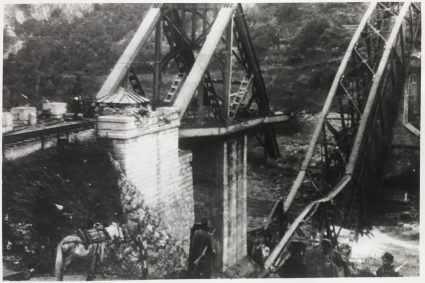
The Lim bridge after it had been destroyed. This was the largest bridge destroyed in<br /> Yugoslavia after the German invasion. The BBC would announce that the attack on the town and bridge was carried out by the Partisans. (IWM, London, Documents archive 12697)
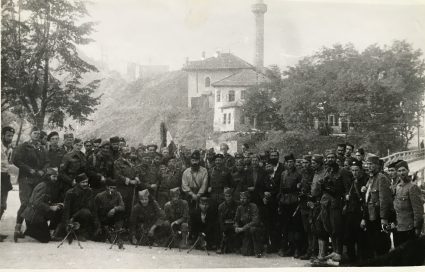
Immediately following the capture of Višegrad in the autumn 1943, a group of JVuO with members of both the S.O.E. and O.S.S. (IWM, London, Documents archive 12697)
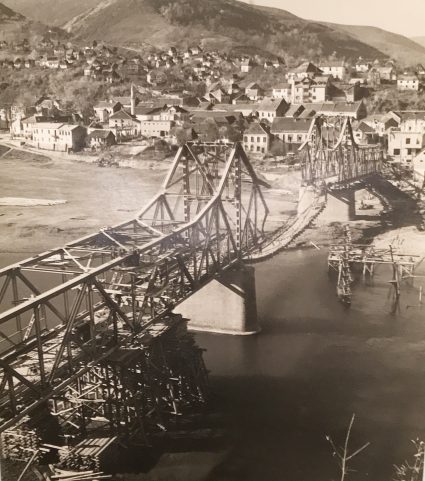
The Zvornik Bridge on the border between Serbia and Bosnia as it looked in 1943. (IWM, London, Documents archive 12697)
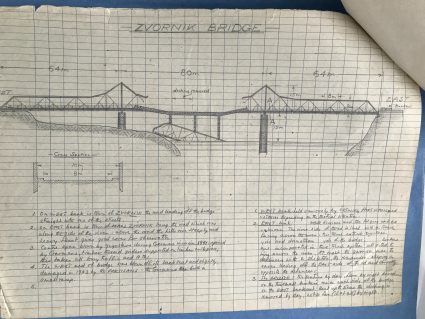
A sketch map of the same Zvornik Bridge drawn by Major Archie Jack. (IWM London, Documents archive 12697))
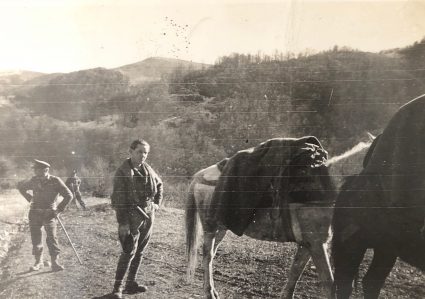
An S.O.E. officer with the JVuO takes a break next to mules laden with stores. (Personal photographic collection of Mr. Harry Fenney)
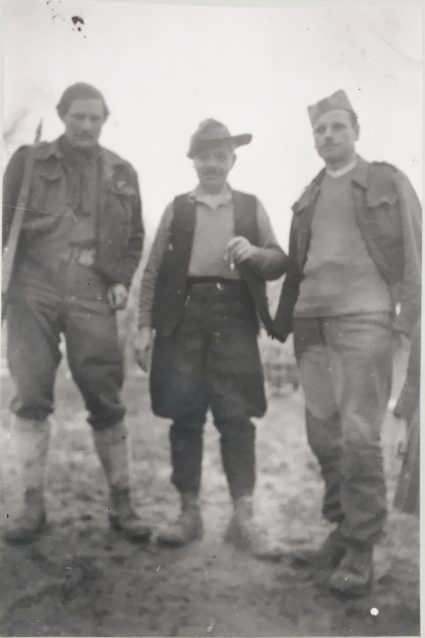
Captain Lees and Major Shemer on the move somewhere in Serbia. Note that Captain Lees is wearing traditional Serbian footwear. (IWM, London, photographic archive, collection 8905-16)
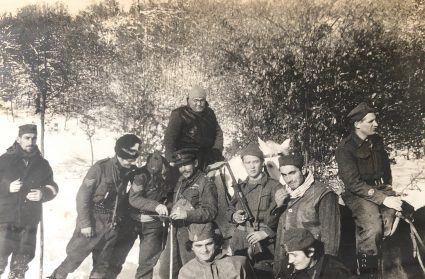
Sergeant McFarlane, Colonel Bailey, and Brigadier Armstrong with their radio operators and JVuO escorts study a map whilst on the move. (Personal photographic collection of Mr. Harry Fenney)
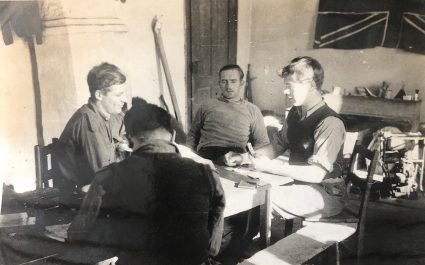
S.O.E. officers and escaped P.O.W.’s play cards in their winter quarters in Serbia. (IWM, London, photographic collection 8905-16)
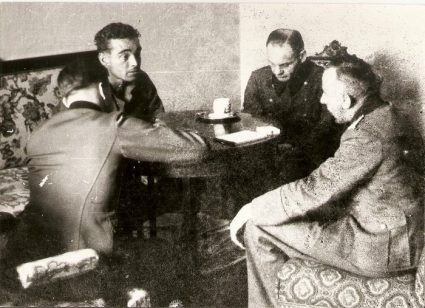
A British officer interrogates German officers shortly after their capture. (Stock Image)
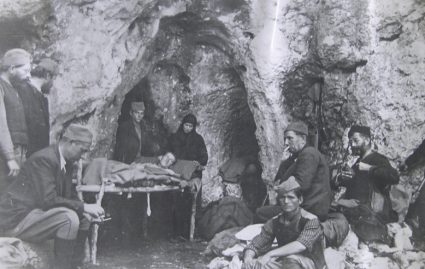
General Draža Mihailović and his staff in a cave somewhere in Serbia. This image is included in Colonel Bailey's report on medical conditions with the JVuO dated April 1944. (National Archives, London, Document HS7-202)
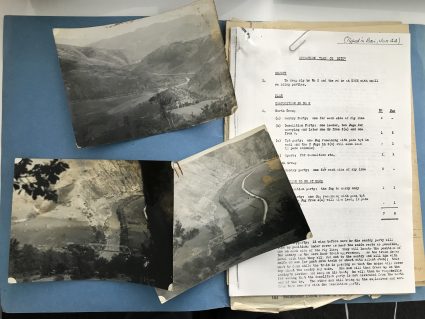
Operation "Sad će biti" was due to be mounted against the bridges on the Ibar river near Ušće in southern Serbia in January 1944 but was canceled by S.O.E. (IWM, London, Documents archive 12697)
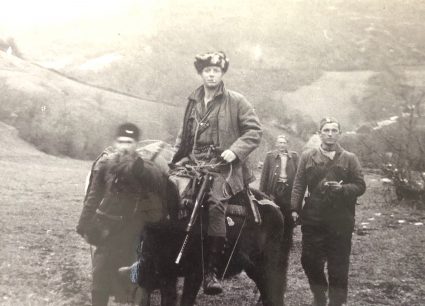
Sergeant McFarlane moving with JVuO guides through Serbia. (Personal photographic collection of Mr. Harry Fenney)
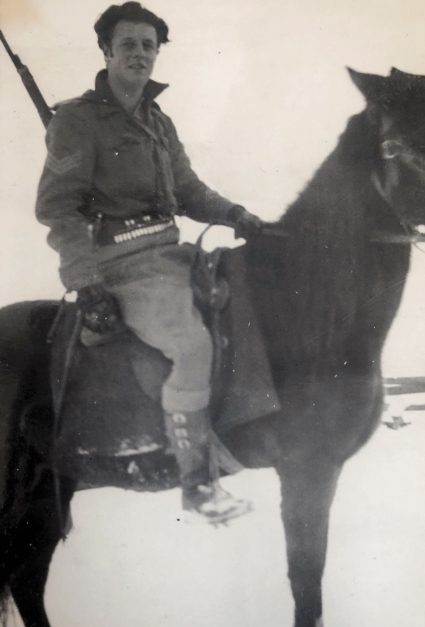
Sergeant McFarlane in the mountains of Serbia. (Personal photographic collection of Mr. Harry Fenney)
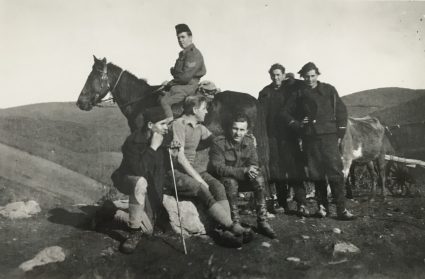
Members of the S.O.E. staff at General Mihailović’s headquarters awaiting the delivery of stores by aircraft. (IWM, London, photographic archive, HU90573)
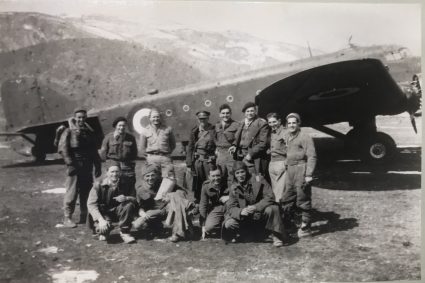
S.O.E. officers and aircrew prior to evacuation by air from Serbia. Between June 1944 and May 1945, the Balkan Air Force flew 36,340 sorties, delivered 16,400 tons of supplies and flew 2500 individuals into Yugoslavia and 19,000 (mostly wounded) out. (IWM, London, Documents archive 12691)
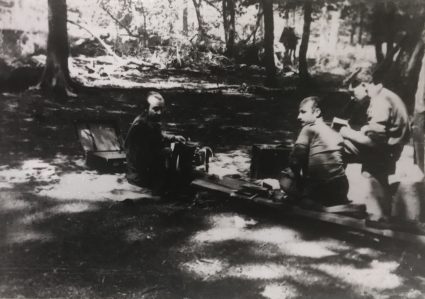
S.O.E. officers sending messages with Mark III wireless sets somewhere in Serbia. (IWM, London, photographic archive, HU90570)

Marshal Tito, with a Union Flag clearly visible behind him, addresses the crowds on 27th March 1945. (IWM, London, photographic archive, NA23613)
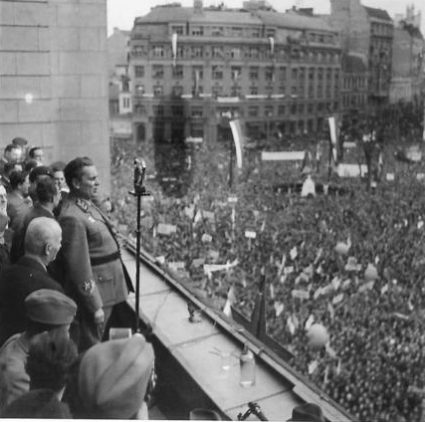
Marshal Tito addresses the crowds gathered in Republic Square in Belgrade on 27th March 1945. (IWM, London, photographic archive, NA23610)

Crowds with Union Jack flags cheer NOVJ soldiers on horseback in Republic Square 27th March 1945. (IWM, London, photographic archive, NA23617)
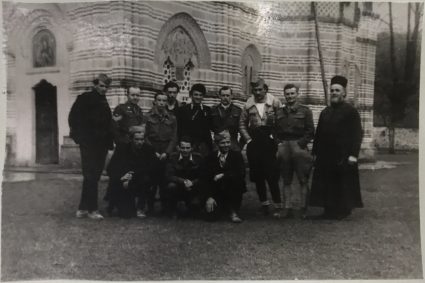
Major Jasper Rootham and his team with their escorts at Kalenić Monastery en route to Pranjane in May 1944. (IWM, London, photographic collection 8912-19)
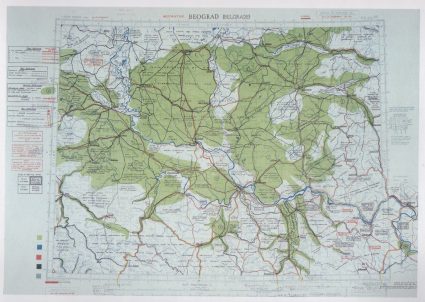
Map of the terrain around Belgrade showing how it can be approached in the event of an attack. This information was used by Partisans to great effect in the capture of the city. (IWM, London, photographic archive,)

